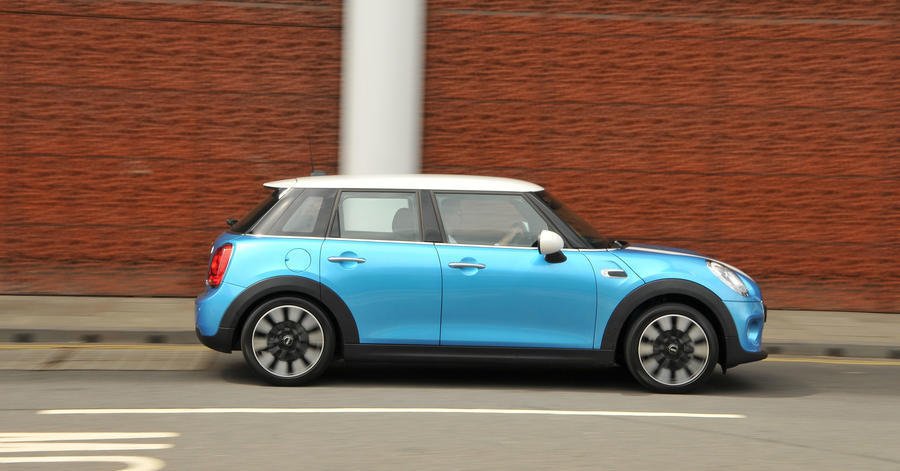The Mini has expanded – literally and figuratively – since it was relaunched in 2001. Not only has it grown in size but you’ll also find everything from convertibles and baseball cap-inspired coupés to SUVs, estates and even plug-in hybrids and electric models. But the humble hatch remains the backbone of the range, and the big news for the third-generation Mini that arrived in 2014 was you could have it with five doors. Grown-up stuff.
All this new-found versatility didn’t stop the Mini from being incredibly popular, not least because of the charming retro touches that help it to stand out among rivals.
The One uses an underpowered 101bhp 1.2-litre petrol unit, while the One D has an equally lethargic 94bhp 1.5-litre diesel. The Cooper gets a zingy 136bhp 1.5-litre petrol or a 115bhp 1.5-litre three-pot diesel, while the Cooper S has a 197bhp 2.0-litre petrol four. Performance diesel fanciers can have a Cooper SD with a 168bhp, 266lb ft 2.0-litre four. The top-rung JCW hot hatch has a 231bhp version of the Cooper S’s engine.
There aren’t many trim options but there are numerous packs to look for. The Chili Pack adds dual-zone climate control, automatic lights and wipers, LED headlights, additional storage and an adjustable boot floor. The Comfort Pack has heated front seats and rear parking sensors, while Comfort Plus adds a reversing camera. The Navigation Pack brings sat-nav, while Navigation XL includes a bigger infotainment screen. The Driving Assistance Pack has automatic emergency braking.
In 2018, Classic, Sport and Exclusive tiers were added to Cooper and Cooper S models, Classic being the standard version, Sport offering a firmer option and Exclusive being the posh one. The optional packs continued as before.
Under the third-gen Mini is a more rigid platform shared with some front-wheel-drive BMWs. It preserves the tight handling characteristics with which the brand is associated while adding a ride sophistication that makes this the most refined Mini yet.
The ballooning proportions make this the biggest Mini hatch yet, too, with more room front and rear. The cabin has a few rough edges and lower-grade materials, in addition to some good-looking soft-touch plastic surfaces, but the familiar Mini driving position and dashboard remain, alongside the BMW iDrive-based infotainment system that is really easy to use.
Around £6000 is the current entry point to the Mini club for a car with service history and no previous accident damage. Up the ante to £8000-£12,000 and you’ll find a number of three- or five-door examples dating from 2016. Increase your budget to £13,000 or more for a facelifted model from 2018 onwards.
Diesels have the best economy. A 1.5 gets 72.4mpg and pre-2017 cars qualify for free VED. The 1.5 petrol still manages a credible 60.1mpg NEDC combined. There have been five recalls, including leaky EGRs and faulty crank sensors on diesels, airbag issues, faulty front seat backrests and spare wheels working loose. Check with your Mini dealer to see if the work has been carried out. The current Mini is proving to be pretty dependable, beating its closest rival, the Audi A1, in the latest What Car? Reliability Survey. Mini as a brand is also coming within spitting distance of Toyota for overall reliability.
Our pick
Mini 1.5 Cooper 5dr: The perfectly pleasant 1.5-litre petrol Cooper has decent performance and isn’t troubled by any three-cylinder thrumminess. The three-door looks the best but the five-door has much-needed practicality.
Wild card
Mini Cooper SD: There are better hot hatches than the JCW, so instead have a look at the Cooper SD. Performance is similar to a Cooper S but it costs about the same to buy and is much cheaper to run.
Ones we found
- 2015 1.2 One 3dr, 135,000 miles, £4500
- 2015 1.5 Cooper 5dr, 32,000 miles, £8495
- 2016 2.0 Cooper SD 5dr, 45,000 miles, £10,999
- 2016 2.0 Cooper S 5dr, 45,000 miles, £12,750
Related News

